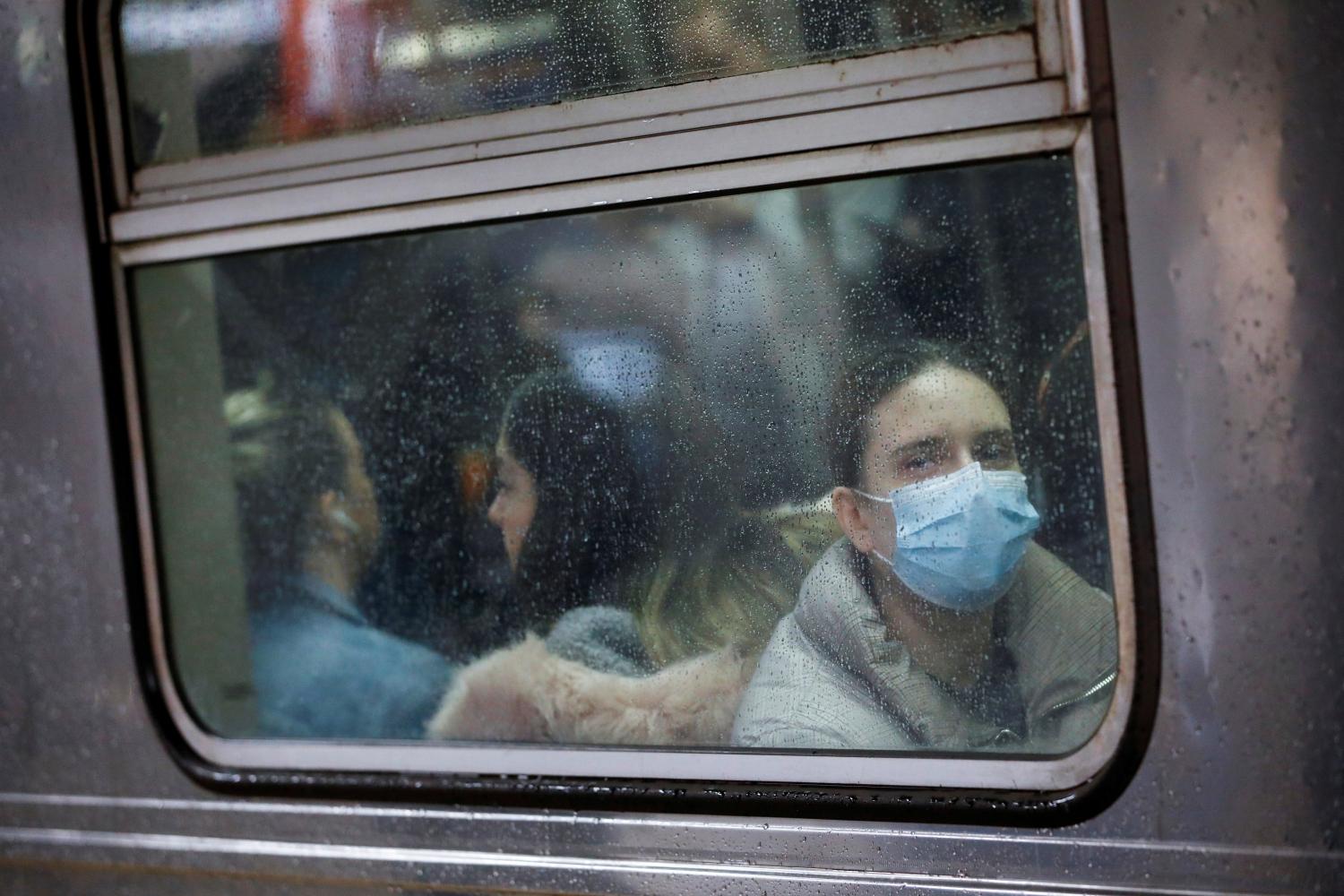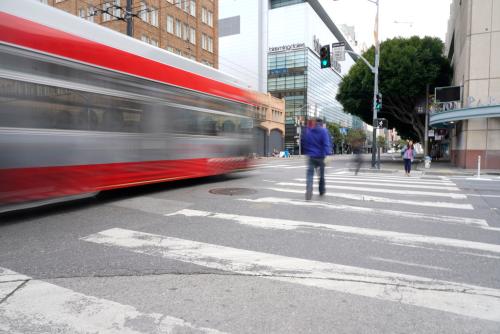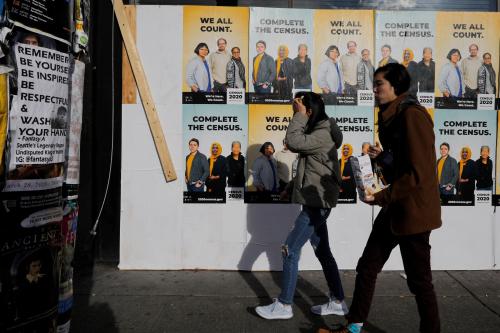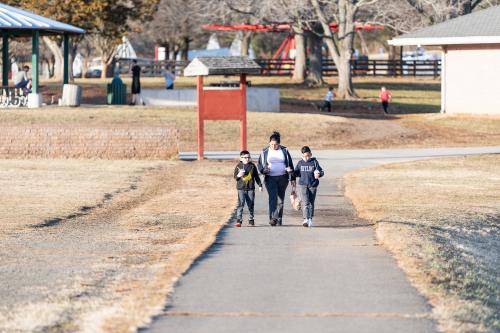This post was updated on April 14, 2020 with data from The New York Times as of April 12, 2020.
Every day since the COVID-19 pandemic began surging, The New York Times and other sources have reported the size and geographic scope of coronavirus cases. But in addition to these raw numbers, it is useful to know the key demographic attributes of places with the most cases, in comparison to those with lower (but likely increasing) exposure. Based on the Times’ data for counties reported through April 12, the figures below provide a glimpse of how these shifts are taking place on key measures of urban-suburban-rural status, race-ethnicity, and voting in the 2016 presidential election.
U.S. urban cores, racial minorities (especially Black Americans), and those who cast votes for Hillary Clinton in 2016 disproportionately comprise counties where COVID-19 cases are currently clustered—a stark contrast to areas where there is a low level of coronavirus exposure. These characteristics are not necessarily factors that make a place more susceptible to the virus (although high population density in urban cores can speed the spread), but instead they reflect similarities among harder-hit regions.
Nearly one-third (31.8%) of Americans reside in counties with the highest COVID-19 prevalence (more than 100 cases per 100,000 population), with an almost similar number of residents living in counties with a smaller, but still large, prevalence (between 50-100 cases per 100,000 population). Thus, as of Sunday night, about two-fifths of U.S. residents lived in counties with a lower COVID-19 prevalence, though that may be changing.

People living in the urban cores of large metropolitan areas comprise more than half of residents who live in the counties with the highest COVID-19 prevalence. Residents of outer suburbs, smaller metropolitan areas, and rural America represent far smaller shares of those living in high-prevalence areas. Persons living in large-prevalence counties are also more likely to be urban core residents. In contrast, fully two-thirds of those living in lower-prevalence counties reside outside of urban cores and their close-in suburbs.

The race-ethnic makeup of high-prevalence county residents is also distinct from the rest. While whites comprise 60% of the U.S. population, they make up only 56% of high-prevalence county residents compared to 67% of residents in lower-prevalence counties. In contrast, Black Americans are a larger presence in high-prevalence counties, comprising fully 18% of their residents—compared with 7.8% in lower-prevalence counties. This is also the case for the child population in these places, of which whites make up less than half for the nation. In the highest-prevalence counties, whites comprise an even smaller share of the child population compared to lower-prevalence counties, where they represent 56% of all children
While white and Black shares of the highest-prevalence county residents differ markedly from those in lower-prevalence areas, Latino or Hispanic residents show uneven shares across COVID-19 prevalence categories, as does the smaller Asian American population.
The strong relationship between the Black population of a county and its COVID-19 prevalence can be seen in Table 2. Counties with large Black population shares display COVID-19 prevalence rates well over 175 per 100,000 population, and much higher death prevalence rates than counties with smaller Black populations. Among residents in counties where Black residents comprised more than nine-tenths of the population, the death prevalence is 13.4 per 100,000 people, in contrast to 6.7 for the nation as a whole.

Many of these counties are rural and small metropolitan counties in the South. Conversely, counties with small Black populations display far lower COVID-19 case and death prevalence
The opposite is true for white populations. Counties that are 95% white display COVID-19 case prevalence rates of just 38 per 100,000 people, and death prevalence rates of 1.5 per 100,000. These rates rise as the county’s white population share declines.
For Latinos or Hispanics, there is not a direct relationship between their population representation and COVID-19 case and death prevalence. The highest rates of both occur in counties where Latinos or Hispanics comprise between 20% and 30% of the population. These include counties in metropolitan New York, Boston, and Houston, among others.
Another distinguishing feature of residents in counties with the highest COVID-19 prevalence is their vote for Hillary Clinton over Donald Trump in the 2016 election: a 57-38 margin. This stands in contrast with voters in the lower-prevalence counties, who favored Trump over Clinton by 54-39. Much of this distinction draws from the urban and rural difference between these populations. It remains to be seen whether the political attitudes of these groups change as they assess the current administration’s handling of the pandemic.
Public health experts make plain that the nation can expect a continued expansion of the coronavirus across the country. It will be important to monitor the demographics of this expansion, even as it is apparent that current high-concentration areas are disproportionately urban, and comprised heavily of racial minorities and Democratic voters.
The Brookings Institution is committed to quality, independence, and impact.
We are supported by a diverse array of funders. In line with our values and policies, each Brookings publication represents the sole views of its author(s).







Commentary
Who lives in the places where coronavirus is hitting the hardest?
April 10, 2020